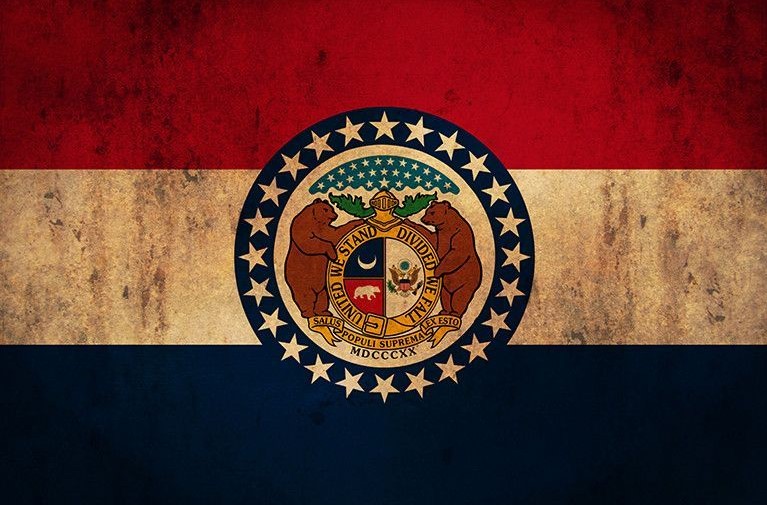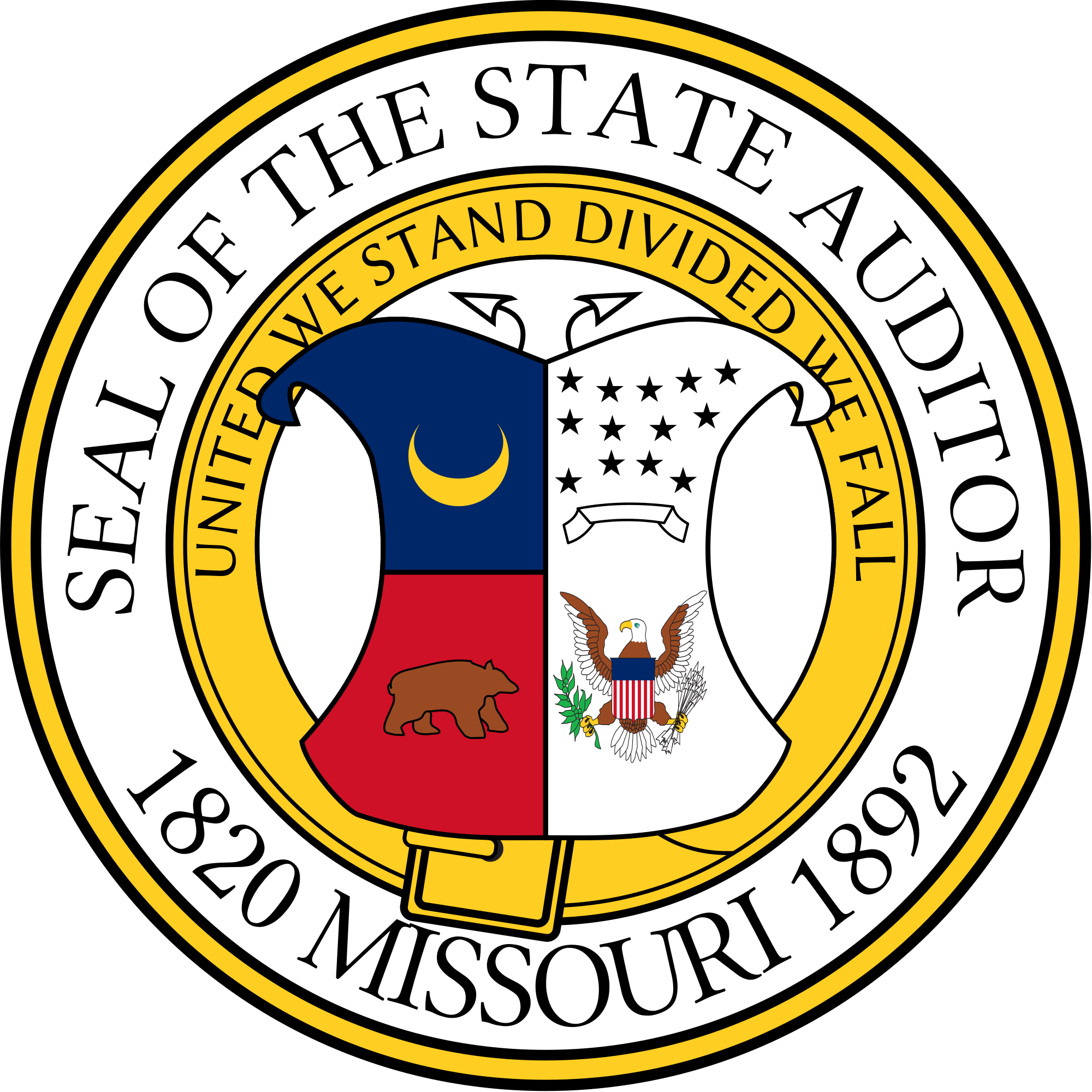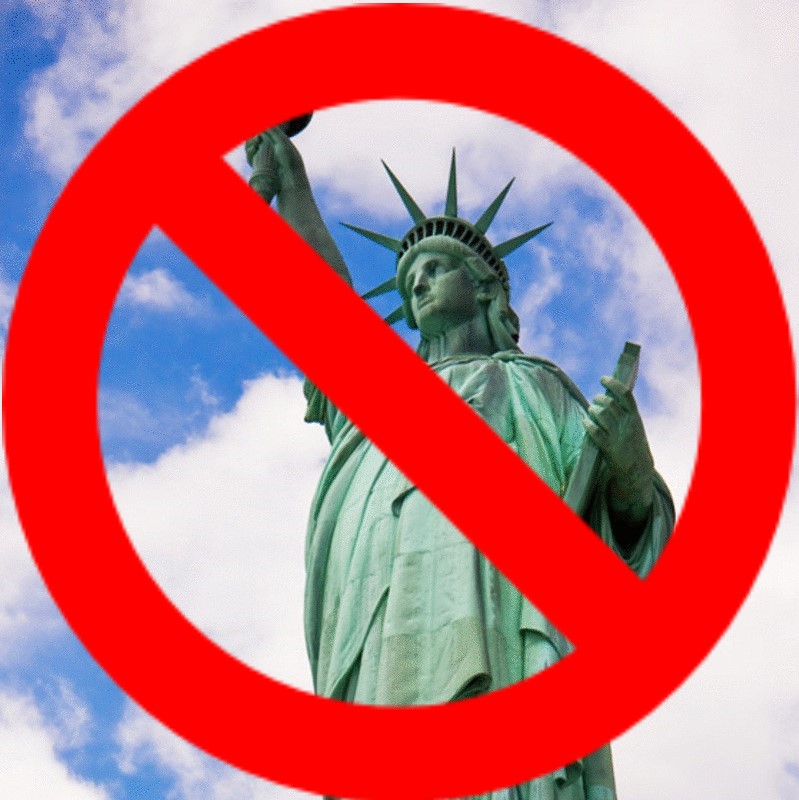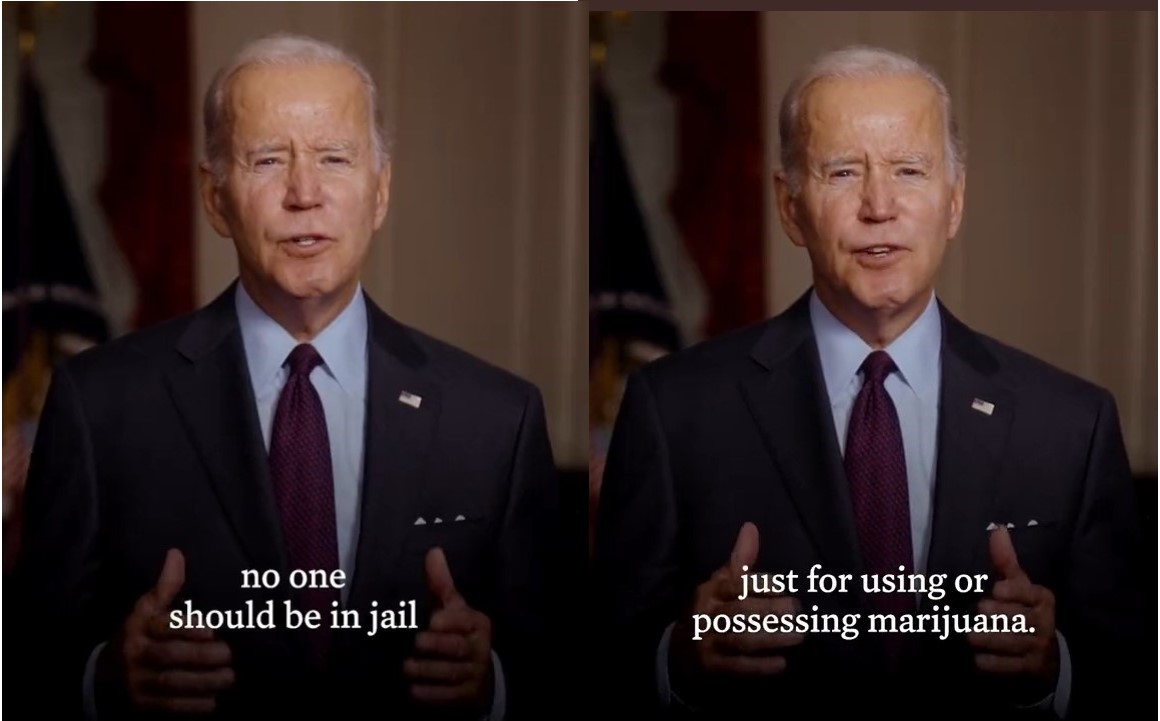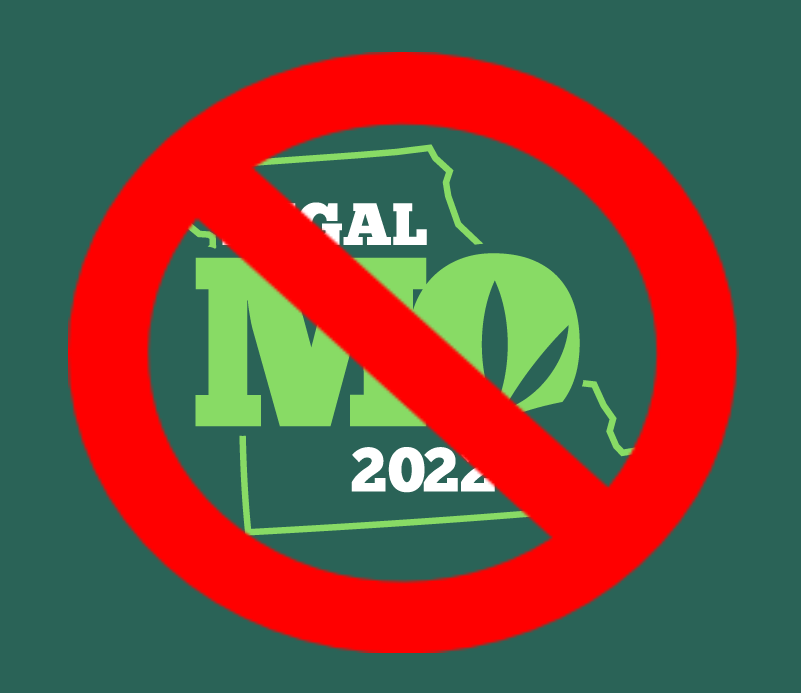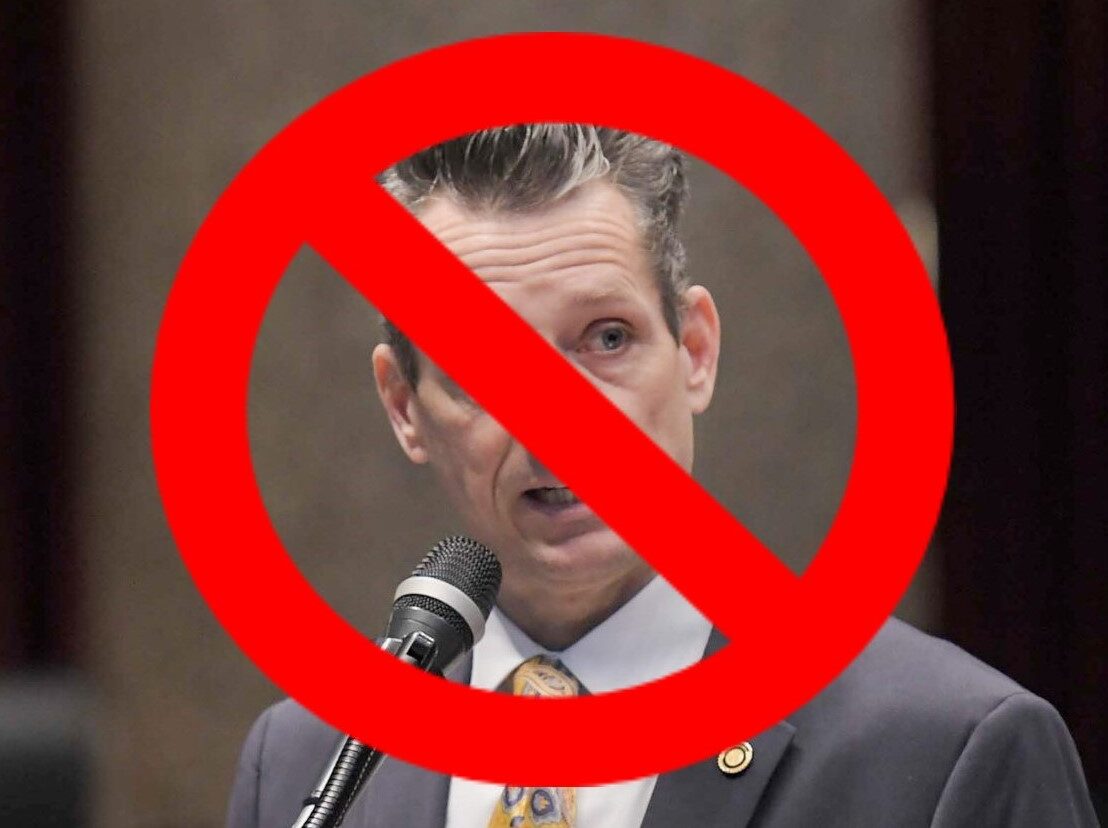…but is “Amend. 2” Right for Missouri?
By Mark Pedersen
This article was originally published on October 4th, 2018 in the Medical Cannabis Journal.
Of the three medical Cannabis initiatives on Missouri’s November ballot, this one has been promoted as having the greatest chance of actually passing. Some are saying that it would “be less harmful”. I’ve always thought that was a scary thing to say. I’ve never really understood why people would be so prone to settle for far less than what they need. I guess what frustrates me most is that so VERY FEW who would vote for an initiative like this have actually read it or understand the ramifications if it were to pass.
This is one of two “Constitutional” Amendments – a third initiative is a “statutory” Amendment. They are all three quite lengthy. Despite anything anyone tells you, this is done quite deliberately. It’s a corrupt method, hoping most will avoid reading their tediously confusing jargon, while hiding their real desires amid so many words and poorly assembled grammar.
Does this critique address all of the problems with this initiative? No…it most certainly does not. But I try to hit on the most crucial issues, as they are found here and likewise replicated in many medical initiatives springing up across the country. My hope is to make you think before you act…before you vote.
Please download Amendment 2 from the Missouri’s Secretary of State’s Office. Read it for yourself. As you do, realize…in all the effort and money that has been devoted to putting this initiative on the ballot, it would have taken no more energy…no more expense to push a REAL legalization initiative and actually appreciate the real dreams of Missouri’s cannabis patients.
* * * * * * *
Missouri’s Amendment No. 2
Be it resolved by the people of the state of Missouri that the Constitution be amended:
Amending a state’s Constitution is something that I have spoken and written much about through the years. If this “amendment” were truly written to provide protection for Missouri patients, placing its directives in the constitution would make perfect sense. With the difficulty that it takes to complete the initiative process, one can be assured that only the most fervent would attempt to change it, and even at that, it would be met by the votes of the majority in a general election.
But what happens when private interest with deep pockets gets involved? What if the industry that would profit most from, let’s say a very restrictive “dispensary model”, drops a sizeable sum into the hands of an organization that, in turn, drafts THEIR perfect initiative… one that ensures a multi-million dollar return from across the state while fortifying prohibition so that their new-found Missouri “cash-cow” remains in their lucrative control for some time to come?
With the kind of money that the “industry” has, there would be no problem hiring paid petitioners to ensure that there would be enough signatures to reach the ballot.
But where would all this leave the chronically ill patient? After all, isn’t that what all of this is about? Some think allowing the “devil-to-get-his-due” is OK if patients, at least SOME patients would have access. Perhaps if only those who use recreationally, or occasionally, because that is all they can afford with the artificially inflated prices that go with THIS level of prohibition? Regarding the poor, there will be provision for SOME of them. The terminally ill? They have their conventional means of treatment. After all, there’s money to be made…isn’t that what this is REALLY about?
As one young profiteer put it so boldly on my Facebook wall, amid a conversation about access for terminally ill children…, he said, “If they don’t have the money, they don’t need access.”
Article XVI is created by enacting one new section to be known as Section 1 of Article XVI, to read as follows:
Section 1. Right to Access Medical Marijuana
1. Purposes
This section is intended to permit state-licensed physicians to recommend marijuana for medical purposes to patients with serious illnesses and medical conditions. The section allows patients with qualifying medical conditions the right to discuss freely with their physicians the possible benefits of medical marijuana use, the right of their physicians to provide professional advice concerning the same, and the right to use medical marijuana for treatment under the supervision of a physician.
This section is intended to make only those changes to Missouri laws that are necessary to protect patients, their primary caregivers, and their physicians from civil and criminal penalties, and to allow for the limited legal production, distribution, sale and purchase of marijuana for medical use. This section is not intended to change current civil and criminal laws governing the use of marijuana for nonmedical purposes. The section does not allow for the public use of marijuana and driving under the influence of marijuana.
If Missouri’s citizens could benefit from Cannabis medicinally, why would the writer of this initiative seek to “limit it’s legal production, distribution, sale and purchase”? Is this a method of industry building that guarantees a middleman? Further, how can the writer state that the purpose of this initiative is to ensure that someone with terminal illness (cancer, etc.) would have safe, legal access, but then deny them the right to access it anywhere but their home (and, if they rent, perhaps not even there*)?
*As I have shared in other critiques, here in Colorado, Cannabis is just beyond the reach of 90% of those who really need it – because of overly restrictive regulations that covet questionable business practices, and ignores exorbitant pricing. All while invoking policy that penalizes patients and neglects their actual needs.
Most lease agreements are designed around a Federal model, which, despite Colorado law, sees Cannabis as a “harmful dangerous illegal drug” and forbids its use on or within its premises. Most forbid cultivation, while many will not tolerate edibles or even the presence of any form of Cannabis.
“Driving under the influence”? Where is the writers definition of that? Let alone that there is no definition of “under the influence”…Without a definition, all who read this initiative, but most importantly, law enforcement, will have the opportunity to interpret this line however it benefits them most. Currently, across the nation, in “legal” as well as “nonlegal” states, law enforcement considers ALL Cannabis as “contraband”. This is not an impression, but fact. Its a Schedule I drug. Without clear and concise rules, law enforcement and the courts will resort to their OLD playbook.
If you “use” Cannabis at all, you’re “under the influence”. So, by this initiative, ALL Cannabis users fall under the cross-hairs of PD if they attempt to drive. This has nothing to do with euphoria, but EVERYTHING to do with the very reason we have medical Cannabis legislation. Cannabis benefits the body. So where is the “influence”? Should we consider shrinking tumors and lack of seizures as proof of being “under the influence”?
2. Definitions
(1) “Administer” means the direct application of marijuana to a Qualifying Patient by way of any of the following methods:
(a) Ingestion of capsules, teas, oils, and other marijuana-infused products:
(b) Vaporization or smoking of dried flowers, buds, plant material, extracts, or oils;
(c) Application of ointments or balms;
(d) Transdermal patches and suppositories;
(e) Consuming marijuana-infused food products; or
If this sounds like a shopping list, it actually is…or more specifically, a “dispensary” list. Most of this initiative addresses the creation of a narrow, specific industry that would operate from within prohibition. Identifying the inventory protects the “vendor” and “retailers”.
(f) Any other method recommended by a Qualifying Patient’s physician.
(2) “Department” means the Department of Health and Senior Services, or its successor agency.
In my efforts from years ago, I brought this specific “department” to public attention because it is the department that oversees Missouri’s “Controlled Substance List”. My goal was, and still is to remove Cannabis entirely from the list of Controlled Substances. Every state has that right.
If this writer would have done as I had directed, this line and, actually, most of this document would not be necessary. Once Cannabis is removed from its state’s Controlled Substance List, it is no long a “controlled substance”, no longer a drug.
(3) “Entity” means a natural person, corporation, professional corporation, nonprofit corporation, cooperative corporation, unincorporated association, business trust, limited liability company, general or limited partnership, limited liability partnership, joint venture, or any other legal entity.
As you will find in other sections where the word “entity” is used, this is most often an “invitation to interests OUTSIDE of Missouri, since it addresses expertise that could only be developed where a Cannabis industry has been legally functioning.
(4) “Flowering plant” means a marijuana plant from the time it exhibits the first signs of sexual maturity through harvest.
Few growers work continually from seed. Virtually all propagation is done with clones. This means quicker to bloom stage, but most importantly, it guarantees genetics and gender, while eliminating the questionable period between seed preparation and the first emergence of pistils, that which signifies that it’s a female, (unless its one of many “hermaphroditing” or “stressed” strains.
Since female plants carry the lion’s share of resin and thereby Cannabinoids, only those involved with strain manipulation would be cultivating male plants. This, of course would not (could not) be the average patient (in Missouri), since the included plant limits do not stipulate plant numbers for propagation and vegetative growth.
If the ONLY plant limits stipulated are those regarding plants in “bloom”, it is to be expected that law enforcement would regard that as the total limit per household.
Of course, the provisions of this initiative afford statutory refinements, in fact guarantee them, so Missouri can expect a mountain of regulation to follow. But no matter the number of clones and/or vegetative plants that might be allowed, only six will be allowed by law to move beyond the first sign of bloom stage.
(5) “Marijuana” or “Marihuana” means Cannabis indica, Cannabis sativa, and Cannabis ruderalis, hybrids of such species, and any other strains commonly understood within the scientific community to constitute marijuana, as well as resin extracted from the plant and marijuana-infused products. “Marijuana” or “Marihuana” do not include industrial hemp containing a crop-wide average tetrahydrocannabinol concentration that does not exceed three-tenths of one percent on a dry weight basis, or commodities or products manufactured from industrial hemp.
Cannabis Indica, Cannabis Sativa and Cannabis Ruderalis and all forms in between are, Cannabis. “Industrial hemp” is a method of use, not a strain. This is how the language is twisted. How can you NOT include “industrial hemp” in the marijuana/Cannabis definition? There is NO scientific basis for renaming a Cannabis solely based on its THC content. Industrial hemp is not characteristically devoid of THC.
ALL Cannabinoids, most particularly THC, are produced because of their strategically important purpose to the plant. Historically, industrial hemp strains are positive for THC, at different levels. Because the quality of Cannabis as a cash crop was paramount over some mild euphoric effect, quantities of a particular Cannabinoid was irrelevant. But with this initiative, Missouri will install in its Constitution a limit that will hugely cripple a future hemp industry for its people. All because of a preoccupation with THC.
…continued down
(13) “Physician certification*” means a document, whether handwritten, electronic or in another commonly used format, signed by a physician and stating that, in the physician’s professional opinion, the patient suffers from a qualifying medical condition.
In virtually ALL Cannabis policy across the country, this is regarded as a “physician recommendation“ Because Cannabis is STILL a Schedule I drug under this initiative, physicians cannot prescribe it.
(14) “Primary caregiver” means an individual twenty-one years of age or older who has significant responsibility for managing the well-being of a Qualifying Patient and who is designated as such on the primary caregiver’s application for an identification card under this section or in other written notification to the Department.
Few Cannabis programs across this country address “caregiving” beyond cultivating a patient’s plants. In fact, true caregiving encompasses much more.
Qualifying medical conditions
(15) “Qualifying medical condition” means the condition of, symptoms related to, or side- effects from the treatment of:
(a) Cancer;
(b) Epilepsy;
(c) Glaucoma:·
(d) {ill Intractable migraines unresponsive to other treatment;
(e) A chronic medical condition that causes severe, persistent pain or persistent muscle spasms, including but not limited to those associated with multiple sclerosis, seizures, Parkinson’s disease, and Tourette’s syndrome;
(f) Debilitating psychiatric disorders, including, but not limited to, post-traumatic stress disorder, if diagnosed by a state licensed psychiatrist;
I take great exception to this line. It points to the ignorance of the writer. Post Traumatic Stress is NOT a disorder. It is an injury that is suffered by virtually anyone who is forced to endure intense trauma. It exists, whether or not diagnosed by a psychiatrist.
(g) Human immunodeficiency virus or acquired immune deficiency syndrome; (A chronic medical condition that is normally treated with a prescription
The gay community knew more than a decade before medical science that Cannabis could stop the progress of HIV into full blown AIDS. George Bush Sr. closed the “Compassionate Investigational New Program” in 1991 because of the great influx of applications with HIV.
The “Compassionate Investigational New Drug Program” provided (and continues to provide to some) Cannabis from the Federal Government to a small group of seriously ill participants.
(h) medication that could lead to physical or psychological dependence, when a physician determines that medical use of marijuana could be effective in treating that condition and would serve as a safer alternative to the prescription medication:
(i) Any terminal illness: or
(j) In the professional judgment of a physician, any other chronic, debilitating or other medical condition. including, but not limited to, hepatitis C, amyotrophic lateral sclerosis, inflammatory bowel disease, Crohn’s disease, Huntington’s disease, autism, neuropathies, sickle cell anemia, agitation of Alzheimer’s disease, cachexia, and wasting syndrome.
(16) “Qualifying Patient” means a Missouri resident diagnosed with at least one qualifying medical condition.
The problem with lists like this is that it would be impossible to list ALL the illnesses that could be treated with Cannabis. So who gets left out and forced to seek out TWO specialists willing to recommend Cannabis? This is a lot harder than it seems, and, in most cases, hugely expensive. Insurance companies are not willing to duplicate physician expenses for anything other than conventional treatments.
Once again, we see stipulations that prevent access based on economic reasons. I can think of more than one Missouri family that I have worked with that this would profoundly effect.
This section should really be called “Rules for building a “Cannabis Industry”
3. Creating Patient Access to Medical Marijuana
(1) In carrying out the implementation of this section, the Department shall have the authority to:
(a) Grant or refuse state licenses and certifications for the cultivation, manufacture, dispensing, sale, testing, tracking, and transportation of marijuana for medical use as provided by law; suspend, fine, restrict, or revoke such licenses and certifications upon a violation of this section or a rule promulgated pursuant to this section; and impose any administrative penalty authorized by this section or any rule promulgated pursuant to this section.
(b) Promulgate rules and emergency rules necessary for the proper regulation and control of the cultivation. manufacture, dispensing, and sale of marijuana for medical use and for the enforcement of this section so long as patient access is not restricted unreasonably and such rules are reasonably necessary for patient safety or to restrict access to only licensees and Qualifying Patients.
…continued down
(f) The Department may charge a fee not to exceed $5,000 for any certification issued pursuant to this section.
I’m confused. Is this fee encompass “personal use”? Regarding a commercial market, it appears that this provides an option to “the Department” to charge for each individual aspect of production.
…continued down
(c) Instructions or guidance for local authorities and law enforcement officers:
(d) Requirements for inspections, investigations, searches, seizures, and such additional enforcement activities as may become necessary from time to time;
(e) Creation of a range of administrative penalties for use by the Department;
So, in a nut shell, this document gives full authority to Health and Senior Services and the “Department” to draft whatever rules they see fit and to basic design Missouri’s Cannabis program / industry however they choose. I for one become nervous hearing that “searches” and “seizures” and “additional enforcement activities” are being written into a state Constitution.
…continued down
(5) The Department shall maintain the confidentiality of reports or other information obtained from an applicant or licensee containing any individualized data, information, or records related to the licensee or its operation, including sales information, financial records, tax returns, credit reports, cultivation information, testing results, and security information and plans, or revealing any patient information, or any other records that are exempt from public inspection pursuant to state or federal law. Such reports or other information may be used only for a purpose authorized by this section. Any information released related to patients may be used only for a purpose authorized by federal law and this section, including verifying that a person who presented a patient identification card to a state or local law enforcement official is lawfully in possession of such card.
For what purpose would the “Department” feel it is “authorized by Federal law” to compromise confidential personal medical records?
…continued down
The following is the heart of what this initiative is really all about. The “nuts and bolts” of setting up a recreational dispensary industry:
Did I say “recreational”? Why, yes…yes I did. (Remember, this is about making money)
Medical Marijuana Cultivation Facility
($10,000 application + $25,000 – first year, $5,000 + $25,000 – there after for each X 3)
(8) An entity may apply to the Department for and obtain one or more licenses to grow marijuana as a Medical Marijuana Cultivation Facility. Each facility in operation shall require a separate license, but multiple licenses may be utilized in a single facility.
Each indoor facility utilizing artificial lighting may be limited by the Department to thirty thousand square feet of flowering plant canopy space. Each outdoor facility utilizing natural lighting may be limited by the Department to two thousand eight hundred flowering plants. Each greenhouse facility using a combination of natural and artificial lighting may be limited by the Department, at the election of the licensee, to two thousand eight hundred flowering plants or thirty thousand square feet of flowering plant canopy. The license shall be valid for three years from its date of issuance and shall be renewable, except for good cause. The Department shall charge each applicant a non-refundable fee of ten thousand dollars* per license application or renewal for all applicants filing an application within three years of the effective date of this section and shall charge each applicant a non-refundable fee of five thousand dollars per license application or renewal thereafter. Once granted, the Department shall charge each licensee an annual fee of twenty-five thousand dollars per facility license. Application and license fees shall be increased or decreased each year by the percentage of increase or decrease from the end of the previous calendar year of the Consumer Price Index, or successor index as published by the U.S. Department of Labor, or its successor agency. No more than three Medical Marijuana Cultivation Facility licenses shall be issued to any entity under substantially common control, ownership, or management.
Kind of confusing, isn’t it? Basically, anyone who wants to start a Cultivation Facility will be limited to only three facilities, will pay $35,000 the first year and will pay $30,000+ per year there after for each facility.
Medical Marijuana Dispensary Facility
($6,000 + $10,000 – first year, $3,000 + $10,000 – there after for each X 5)
(9) An entity may apply to the Department for and obtain one or more licenses to operate a Medical Marijuana Dispensary Facility. Each facility in operation shall require a separate license. A license shall be valid for three years from its date of issuance and shall be renewable, except for good cause. The Department shall charge each applicant a non-refundable fee of six thousand dollars per license application or renewal for each applicant filing an application within three years of the effective date of this section and shall charge each applicant a non-refundable fee of three thousand dollars per license application or renewal thereafter. Once granted, the Department shall charge each licensee an annual fee of ten thousand dollars per facility license. Application and license fees shall be increased or decreased each year by the percentage of increase or decrease from the end of the previous calendar year of the Consumer Price Index, or successor index as published by the U.S. Department of Labor, or its successor agency. No more than five Medical Marijuana Dispensary Facility licenses shall be issued to any entity under substantially common control, ownership, or management.
Basically, anyone who wants to start a Dispensary Facility will be limited to only five facilities, will pay $16,000 the first year. and will pay $13,000+ per year there after for each facility.
Medical Marijuana-Infused Products Manufacturing Facility
($6,000 + $10,000 – first year, $3,000 + $10,000 there after for each X 3)
(10) An entity may apply to the Department for and obtain one or more licenses to operate a Medical Marijuana-Infused Products Manufacturing Facility. Each facility in operation shall require a separate license. A license shall be valid for three years from its date of issuance and shall be renewable, except for good cause. The Department shall charge each applicant a non-refundable fee of six thousand dollars per license application or renewal for each applicant filing an application within three years of the effective date of this section and shall charge each applicant a non-refundable fee of three thousand dollars per license application or renewal thereafter. Once granted, the Department shall charge each licensee an annual fee of ten thousand dollars per facility license. Application and license fees shall be increased or decreased each year by the percentage of increase or decrease from the end of the previous calendar year of the Consumer Price Index, or successor index as published by the U.S. Department of Labor, or its successor agency. No more than three Medical Marijuana-Infused Products Manufacturing Facility licenses shall be issued to any entity under substantially common control, ownership, or management.
Anyone who wants to start an Infused Products Facility will be limited to only three facilities and will pay $16,000 the first year. Then $13,000+ per year there after for each facility.
…continued down
* Patient Cultivation – Qualifying Patient or Primary caregiver
($100 + = 6 flowering plants)
(12) Except for good cause, a Qualifying Patient or his or her Primary caregiver may obtain an identification card from the Department to cultivate up to six flowering marijuana plants for the exclusive use of that Qualifying Patient. The card shall be valid for twelve months from its date of issuance and shall be renewable with the annual submittal of a new or updated physician’s certification. The Department shall charge an annual fee for the card of one hundred dollars, with such rate to be increased or decreased each year by the percentage of increase or decrease from the end of the previous calendar year of the Consumer Price Index, or successor index as published by the U.S. Department of Labor, or its successor agency.
With the purchase of an “identification card”, a patient can cultivate up to a maximum of six plants – in “flower”. There is no listing for plants that are seedlings or in vegetative state. These amounts will apparently have to be haggled out in the state house. My guess, after much nonsense, the “Department” will designate a maximum of six plants will be permitted in “vegetative” state, to reflect the six already permitted in “flower”, but for now, all that Missouri patients would have under this initiative would be what it states. Six plants – TOTAL per year – is what it states. Anyone who goes over may very well face past/present law regarding such an infraction. So those promised that once they “had a card”, would be legal, were seriously under-informed.
Let’s do some more math. Considering that an average indica hybrid Cannabis plant, in a home garden, should glean 6 to 8 ounces per plant:
8 X 6 = 48 ounces. This is what the writer would deem to be a year’s supply.
This, obviously, forces the patient to have to patronize the dispensary industry to make up for this “mandated” shortage in their home grow.
(Which leads to…) Purchasing Limits
(13) The Department may set a limit on the amount of marijuana that may be purchased by or on behalf of a single Qualifying Patient in a thirty day period, provided that limit is not less than four ounces of dried, unprocessed marijuana, or its equivalent. Any such limit shall not apply to a Qualifying Patient with written certification from two independent physicians that there are compelling reasons why the Qualifying Patient needs a greater amount than the limit established by the Department.
30 day “purchased” supply = 4 ounces Cannabis plant material – unprocessed
– or –
2 independent physicians with “compelling reasons” that the patient needs more
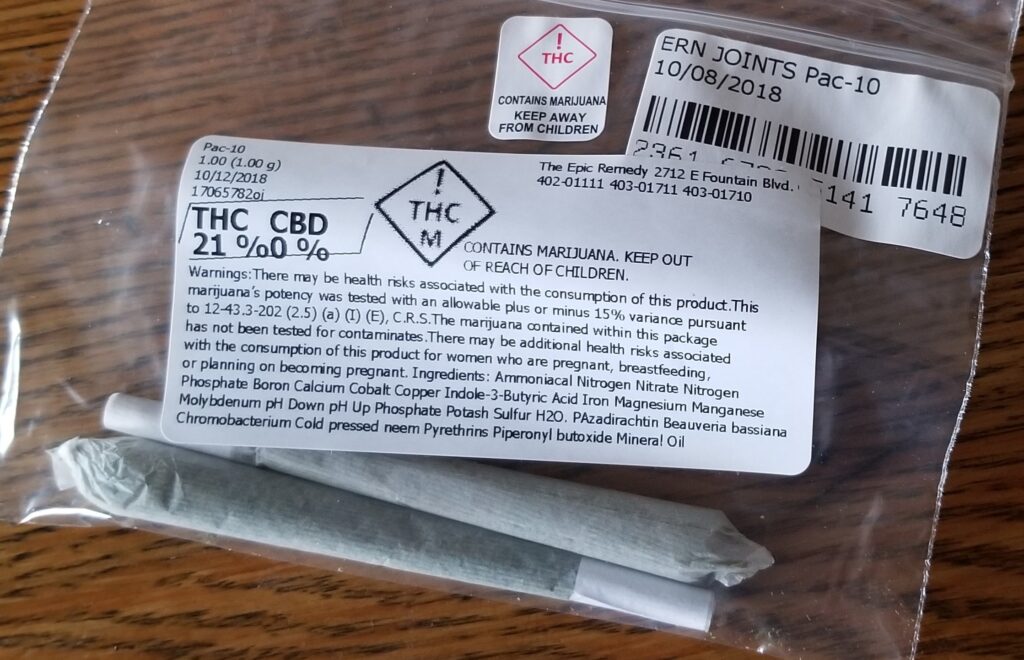
Patient “possession” limits”
(14) The Department may set a limit on the amount of marijuana that may be possessed by or on behalf of each qualifying patient, provided that limit is not less than a sixty day supply of dried, unprocessed marijuana, or its equivalent. A Primary caregiver may possess a separate legal limit for each Qualifying Patient under their care and a separate legal limit for themselves if they are a Qualifying Patient.
Qualifying Patients cultivating marijuana for medical use may possess up to a ninety day supply, as long as the supply remains on property
under their control. Any such limit shall not apply to a Qualifying Patient with written certification from two independent physicians that there are compelling reasons for additional amounts.
What is a “sixty day (minimum) or “ninety day” (maximum) supply of dried, unprocessed marijuana”? If this number is not stipulated here, it will have to be determined by the “Department”, whom this writer gives FULL control. Since this relates to “unprocessed marijuana”, those suffering from terminal illness are obviously left out. We’re hard-pressed to guess what these amounts could be.
I have spoken to many across this country who attempted to control their chronic illness with “smoked” Cannabis. For many “non-cancer ailments, this is possible. The amount I most often heard was one half to one ounce of Cannabis flower per week, so let’s try to look at this mathematically.
I weighed a “pre-roll” (commercially purchased Cannabis “joint”). It came out close to 1.5 grams. Let’s figure five joints per day.
(“not less than”) 60 day supply: 1.5 X 5 = 7.5gr per day. 7.5 X 60 = 450gr, or 16.07 ounces, or 1 pound
(“up to”) 90 day supply: 1.5 X 5 = 7.5gr per day. 7.5 X 90 = 675gr, or 24.11 ounces, or 1.5 pounds
Sounds like a lot if you’re a recreational user, but of course, if you were a patient, particularly someone battling terminal illness, you’re not even in the ball park. Patients battling serious chronic and/or terminal illness normally treat their conditions with “concentrates”, not raw flower. These patients consume anywhere from 100 (MS, MD, epilepsy, etc) to 1000 (cancer) milligrams of FECO (full extract Cannabis oil) or “hash oil” per day.
1,000mg (daily) X 60 = 60,000mg, or 60 grams, or 60 day supply
On a really good day, a patient or caregiver oil maker can produce 60 grams of FECO from a pound of very rich Cannabis flower. Most patients could not afford flower for making oil so they would use “trim” (waste material), which would take upwards of three times as much plant material.
If it were possible to purchase the amount of “flower” to produce 60 grams here in Colorado (it isn’t – legally), it would cost roughly $200 per ounce (medical) raw “flower”,
$200 X 16 = $3,200, or 60 day supply ($1,600 per month)
Most patients can’t sustain this much money going out every month, at least not for long. Believe me, it’s heartbreaking watching as cancer patients near remission – feeling good, tumors shrinking, only to have to stop or reduce their Cannabis oil dosing when their money runs out. So many have perished here in Colorado or gone home to die. How much worse it will be in states like Missouri where patients can only hope for something far less than what we have in these more progressive states.
This initiative doesn’t provide for home oil production, in fact, it PROHIBITS it, so Missouri’s terminally ill aren’t even considered if they hope to produce their own oil, even though “cancer” is considered a “Qualifying Medical Condition”. Of course, they could purchase their oil from a dispensary. The closest thing that I have been able to locate currently in dispensaries across the country is a product called “distillate”. It goes for roughly $45 (medical, $65 retail) per gram here in Colorado. In Illinois and Florida it goes for $90 per gram. That figure would be more what Missouri patients can expect under this initiative. If you live in Missouri and have cancer, I hope you have deep pockets:
$90 X 60 = $5,400 for a 60 day cancer regiment
And this is only two months!
Patients will often reduce to a maintenance regiment after one to two regiments at a full gram per day. But there’s really very little way around a cancer patient NOT spending a minimum of $10,000 in the first six months when forced to pay dispensary prices. Seems like patients, the ones for whom this initiative was designed, are damned if they do and damned if they don’t. But in reality, this was never about patients, was it?
This is about creating an “industry”… making money.
Possession of between the legal limit and up to twice the legal limit shall subject the possessor to Department sanctions, including an administrative penalty and loss of their patient identification card for up to a year. Purposefully possessing amounts in excess of twice the legal limit shall be punishable by imprisonment of up to one year and a fine of up to two thousand dollars.
Well, this pretty well dashes the hopes of the enterprising patient who in hopes of growing tall, two to three pound sativa plants… so as to actually have enough medicine to span the year without paying dispensary prices. Don’t fool yourself. The imprisonment side of this is VERY real.
…continued down
Patient Card ($25 per year), Cultivation Card ($100 per year)
{19) Qualifying Patients under this section shall obtain and annually renew an identification card or cards from the Department. The Department shall charge a fee of twenty-five dollars per year per card with such fee to be increased or decreased each year by the percentage of increase or decrease from the end of the previous calendar year of the Consumer Price Index, or successor index as published by the U.S. Department of Labor or its successor agency. Upon receiving an application for a Qualifying Patient identification card or Qualifying Patient cultivation identification card, the Department shall, within thirty days, either issue the card or provide a written explanation for its denial. If the Department fails to deny and fails to issue a card to an eligible Qualifying Patient within thirty days, then their physician certification shall serve as their Qualifying Patient identification card or Qualifying Patient cultivation identification card for up to one year from the date of physician certification. All initial applications for or renewals of a Qualifying Patient identification card or Qualifying Patient cultivation identification card shall be accompanied by a physician certification that is less than thirty days old.
A Patient Identification Card will cost $25 per year, which is separate from a Patient cultivation identification card,
costs $100.
Patients who want to cultivate and go to dispensaries = $125+ per year
Primary caregiver ($25)
(20) Primary caregivers under this section shall obtain and annually renew an identification card from the Department. The Department shall charge a fee of twenty five dollars per year, with such fee to be increased or decreased each year by the percentage of increase or decrease from the end of the previous calendar year of the Consumer Price Index, or successor index as published by the U.S. Department of Labor, or its successor agency. Upon receiving an application for a Primary caregiver identification car& the Department shall, within thirty days, either issue the card or provide a written explanation for its denial.
Caregivers($25) who cultivate for themselves($100) and/or their patients and wish to shop at dispensaries($25) = $150+ per year
…continued down
(23) The denial of a license, license renewal, or identification card by the Department shall be appealable to the Administrative Hearing Commission, or its successor entity. Following the exhaustion of administrative review, denial of a license, license renewal, or identification card by the Department shall be subject to judicial review as provided by law.
In other words, you can always go to court , if you can afford to incur the expense.
(24) No elected official shall interfere directly or indirectly with the Department’s obligations and activities under this section.
Sounds like protection for patients, but it also prevents officials from defending you, as well. Not really sure why this is here. Certainly don’t think it’s to protect patient rights.
(25) The Department shall not have the authority to apply or enforce any rule or regulation that would impose an undue burden on any one or more licensees or certificate holders, any Qualifying Patients, or act to undermine the purposes of this section.
“Undue burden” does not carry a definition in this initiative. Consequently, it’s meaning would have to be determined in a court of law, (your expense, of course).
“Sin Tax” (4%)
4. Taxation and Reporting
(1) A tax is levied upon the retail sale of marijuana for medical use sold at Medical Marijuana Dispensary Facilities within the state. The tax shall be at a rate of four percent of the retail price. The tax shall be collected by each licensed Medical Marijuana Dispensary Facility and paid to the Department of Revenue. After retaining no more than five percent for its actual collection costs, amounts generated by the tax levied in this section shall be deposited by the Department of Revenue into the Missouri Veterans’ Health and Care Fund. Licensed entities making retail sales within the state shall be allowed approved credit for returns provided the tax was paid on the returned item and the purchaser was given the refund or credit.
Everyone wants to help Veterans…or they should. The thought that “Medical Marijuana Dispensaries” would be forced to help our Veterans sounds like a great idea – if, dispensaries were retail facilities raking in major profits – which, in fact, they are – on both counts. But wait a second. The dispensaries aren’t paying this “excise tax”. Patients are.
What IS an “excise tax”, anyway? They are taxes imposed above and beyond sales tax. “Excise taxes” are classically called “sin taxes” because they are imposed on products to artificially inflate their price…to discourage people from buying them. Morally, that would seem correct, if the products were harmful…like cigarettes and alcohol. Since they are harmful to the body, to use them would be a “sin”.
So, in the language of this initiative, for you to ease the symptoms of your chronic or terminal illness, using Cannabis would be inherently sinful, justifying a penalty on you…but the “Department” is going to justify imposing this penalty for your “sin” by providing help for our Veterans, (those for whom our financially bloated military has refused to provide).
Who is this writer trying to impress…at the expense of our chronically and terminally ill?
…continued down
(3) For all retail sales of marijuana for medical use, a record shall be kept by the seller which identifies, by secure and encrypted patient number issued by the seller to the qualifying patient involved in the sale, all amounts and types of marijuana involved in the sale and the total amount of money involved in the sale, including itemizations, taxes collected and grand total sale amounts. All such records shall be kept on the premises in a readily available format and be made available for review by the Department and the Department of Revenue upon request. Such records shall be retained for five years from the date of the sale.
This sounds like a direct violation of HIPAA law.
(4) The tax levied pursuant to this subsection is separate from, and in addition to, any general state and local sales and use taxes that apply to retail sales, which shall continue to be collected and distributed as provided by general law.
Yeah, we got that.
retail product price + local tax + state + any other “use” tax (imposed by the “Department”) + excise tax = patient dispensary price
…continued down
5. Additional Patient, Physician, Caregiver and Provider Protections
(1) Except as provided in this section, the possession of marijuana in quantities less than the limits of this section, or established by the Department, and transportation of marijuana from a Medical Marijuana Dispensary Facility to the Qualifying Patient’ s residence shall not subject the possessor to arrest, criminal or civil liability, or sanctions under Missouri law, provided that the possessor produces on demand to the appropriate authority a valid Qualifying Patient identification card: a valid Qualifying Patient cultivation identification card; a valid physician certification while making application for an identification card: or a valid Primary caregiver identification card. Production of the respective equivalent identification card or authorization issued by another state or political subdivision of another state shall also meet the requirements of this subdivision.
So, a Patient identification card, a Patient cultivation identification card, a Primary caregiver identification card, a physician “certification” or a valid out-of-state medical card will prevent your arrest. That doesn’t, however protect you from being detained, searched – you and/or your vehicle, medicine seized, paraphernalia seized, peripheral charges, and much more – upon whim.
…continued down
(4) A health care provider shall not be subject to civil or criminal prosecution under Missouri law, denial of any right or privilege, civil or administrative penalty or sanction, or disciplinary action by any accreditation or licensing board or commission for owning, operating, investing in, being employed by, or contracting with any entity licensed or certified pursuant to this section or providing health care services that involve the medical use of marijuana consistent with this section and legal standards of professional conduct.
This enables healthcare professionals to (seemingly) be able to legally own or work for dispensary facilities or governing companies – a seemingly “good thing” – except for one very glaring (entrapment?) mistake in the writer’s thinking.
Under this initiative, Cannabis remains a Schedule I drug by Missouri law. In order for a physician to even touch a Schedule I drug, he or she would have to possess a Schedule I drug license and operate under the very strict guidelines of the “Investigational New Drug Program” policy. For a physician to do otherwise, no matter what this document says, he or she would lose their license, and most likely be in violation of state and Federal law.
…continued down
(8) An attorney shall not be subject to disciplinary action by the state bar association or other professional licensing body for owning, operating, investing in, being employed by, contracting with, or providing legal assistance to prospective or licensed Medical Marijuana Testing Facilities, Medical Marijuana Cultivation Facilities, Medical Marijuana Dispensary Facilities, Medical Marijuana-Infused Products Manufacturing Facilities, Qualifying Patients, Primary caregivers, physicians, health care providers or others related to activity that is no longer subject to criminal penalties under state law pursuant to this section.
Can we guess that one or more attorneys were involved with and stand to profit by this initiative? Both in freedoms and penalties…Who do you think they would they be??
(9) Actions and conduct by Qualifying Patients, Primary Caregivers, Medical Marijuana Testing Facilities, Medical Marijuana Cultivation Facilities, Medical Marijuana Infused Products Manufacturing Facilities, or Medical Marijuana Dispensary Facilities licensed or registered with the Department, or their employees or agents, as permitted by this section and in compliance with Department regulations and other standards of legal conduct, shall not be subject to criminal or civil liability or sanctions under Missouri law, except as provided for by this section.
(10) Nothing in this section shall provide immunity for negligence, either common law or statutorily created, nor criminal immunities for operating a vehicle, aircraft, dangerous device, or navigating a boat under the influence of marijuana.
What they are saying is, “Feel free to consume alcohol or prescription drugs recreationally, but in no way shall you treat your chronic or terminal illness if you intend to EVER use a motorized vehicle.”
This is a HUGE issue that has not truly sunk in among our nation’s cannabis consumers. Perhaps more than any other reason, this is why Cannabis CANNOT any longer be falsely compared to alcohol. Alcohol is an “intoxicant”…a poison. Cannabis is NOT toxic. It is FOOD. Consequently, Cannabis effects the body through nutrition, not trauma.
Alcohol intoxication takes place when the liver is overwhelmed and cannot sufficiently convert the alcohol in one’s system without it, at least in part, spilling over into the bloodstream and making it’s way to other parts of the body, particularly the brain. There, it’s toxic effect begins to kill brain cells, brain tissue swells and dehydrates. This results in a numbing effect that impairs judgement.
When Cannabis is consumed, it easily passes through the digestive system – it’s non-toxic, so the liver sees it as such. As it makes its way through the body, it provides nourishment and healing, replicating the work of endogenous Cannabinoids like Anandamide. The euphoria is experienced when the Cannabinoid THC reaches the cb1 receptors in the brain – not a toxic reaction at all.
Most who consume Cannabis regularly report a HEIGHTENED awareness – NOT an impairment. Wouldn’t it be something if police stops occurred for actual infractions of the law?
Nothing in this section shall limit the General Assembly from enacting laws consistent with this section, or otherwise effectuating the patient rights of this section. The legislature shall not enact laws that hinder the right of Qualifying Patients to access marijuana for medical use as granted by this section.
The “General Assembly”, or the “Department”, cannot hinder your access to Cannabis, but they can make it difficult and they can limit how much you can have access to.
7. Additional Provisions
(1) Nothing in this section permits a person to:
(a) Consume marijuana for medical use in a jail or correctional facility;
I guess we’re fortunate that we’re not talking about insulin. But wait, what about cancer treatment? One of the illnesses listed in this initiative IS cancer. Is the writer deliberately penalizing the terminally ill (to the point of death) for being in jail or prison? Seems that way, doesn’t it?
(b) Undertake any task under the influence of marijuana when doing so would constitute negligence or professional malpractice; or
We don’t have a definition for “under the influence of marijuana, but apparently doing so in some cases could constitute “negligence or professional malpractice”… according to the writer of this initiative. Again, that’s a non-toxic, highly therapeutic plant that shrinks cancerous tumors.
(c) Operate, navigate, or be in actual physical control of any dangerous device or motor vehicle, aircraft or motorboat while under the influence of marijuana: or
Under this initiative, if you are a medical Cannabis patient, you must give up the right to use a motorized vehicle of ANY kind.
(d) Bring a claim against any employer, former employer, or prospective employer for wrongful discharge, discrimination, or any similar cause of action or remedy, based on the employer, former employer, or prospective employer prohibiting the employee, former employee, or prospective employee from being under the influence of marijuana while at work or disciplining the employee or former employee, up to and including termination from employment, for working or attempting to work while under the influence of marijuana.
Again, by reason of the very way that Cannabis functions within the body of a medical Cannabis patient, the writers of this initiative have denied the rights of any employee to sue for discrimination…if the employer states that the discharge was for using Cannabis. Yeah…it’s exactly as it sounds…
…continued down
(7) No Qualifying Patient shall consume marijuana for medical use in a public place, unless provided by law. Violation of this prohibition shall subject the violator to sanctions as provided by general law.
With no definition for a “public place”, this leaves the definition up to the discretion of coworkers, security guards, street merchants, law enforcement and in general, abnormally inquisitive people passing by – and then, ultimately, the courts. This is the sort of thing that transforms a Sunday afternoon with the family into a horrendous situation that might include an altercation with law enforcement, jail time, court and legal fees, loss of work…. Understand, there is no place that is “legal” to consume cannabis outside the home by the rules of this initiative.
Concentrate production
(8) No person shall extract resins from marijuana using dangerous materials or combustible gases without a Medical Marijuana-Infused Products Manufacturing Facility license.Violation of this prohibition shall subject the violator to Department sanctions, including an administrative penalty and, if applicable, loss of their identification card, certificate, or license for up to one year.
In other words, if your condition requires Cannabis concentrates, which is the case for virtually everyone who suffers from chronic or terminal illness, you are forbidden to produce the concentrates yourself. You MUST purchase your life-preserving Cannabis oil from a dispensary.
…continued down
(11) Unless allowed by the local government, no new Medical Marijuana Cultivation Facility, Medical Marijuana Testing Facility, Medical Marijuana Dispensary Facility, or Medical Marijuana-Infused Products Manufacturing Facility shall be initially sited within one thousand feet of any then-existing elementary or secondary school, child day-care center, or church. No local government shall prohibit Medical Marijuana Cultivation Facilities, Medical Marijuana Testing Facilities, Medical Marijuana Infused Products Manufacturing Facilities, or Medical Marijuana Dispensary Facilities, or entities with a transportation certification either expressly or through the enactment of ordinances or regulations that make their operation unduly burdensome in the jurisdiction. However, local governments may enact ordinances or regulations not in conflict with this section, or with regulations enacted pursuant to this section, governing the time, place, and manner of operation of such facilities in the locality. A local government may establish civil penalties for violation of an ordinance or regulations governing the time, place, and manner of operation of a Medical Marijuana Cultivation Facility, Medical Marijuana Testing Facility, Medical Marijuana-Infused Products Manufacturing Facility, Medical Marijuana Dispensary Facility, or entity holding a transportation certification that may operate in such locality.
I’m confused. Just how is that one of these facilities endangers the safety of our children? That is what this implies, correct?
…continued down
(1rea15) Real and personal property used in the cultivation, manufacture, transport, testing, distribution, sale, and administration of marijuana for medical use or for activities otherwise in compliance with this section shall not be subject to asset forfeiture solely because of that use.
Well, there ya go! If we wanted proof that the writers “cherry-picked from my past initiatives, you don’t have to go beyond this line. I implemented this line in my last version of the “Missouri Cannabis Restoration and Protection Act” – or at least a version of it.
The writer of this initiative, however, DOES NOT forbid “asset forfeiture” that is linked to, say – adult or recreational use, or paraphernalia, or any “assumed” peripheral criminal act. In other words, the writer, whether intentionally or not, rendered this line mute.
* * * * * * * *
My summary:
This is one very confusing and convoluted document. There is no doubt to it’s real purpose. It’s goal is to establish a “Cannabis industry”, at the expense (and hardship) of those who require Cannabis to treat their chronic and/or terminal illness. Further, it seeks to impose it’s version of prohibition through a Constitutional Amendment. To, SOME DAY – correct the many problems this initiative creates would require at least one more Constitutional Amendment – and all the work and expense to make it happen – again.
Since the beginning of time, there have been those who sought to create for themselves a “middleman” position where those who produce AND those who purchase are required to pay a surcharge. The result has always been detrimental for the consumer – and morally corrupt when no real benefit is provided to those who flip the bill.
This is supposed to be a “medical Cannabis initiative”. By it’s title, one would assume that the program it would create would first and foremost, benefit the health and well-being of those for whom it was designed – not to profit special interest and out of state investors, and certainly not just as a novel way to generate income for pet projects.
Do you remember where the revenue comes from? Do you recall, after all so many words? The writers seem to think the chronically and terminally ill somehow have experienced a financial windfall, along with their debilitating illness. How could one be so removed from reality that they would think one besieged by illness could somehow afford inflated prices for recreational amounts to treat their life-threatening disease?
To commit an injustice on a fellow citizens could possibly be understood, if one is truly ignorant of the ramifications of one’s actions, but that is not the case here. The seemingly plagiaristic nature of this document attests to at least SOME research, which would have AT LEAST exposed them to a measure of the truth. This is SUPPOSED to be a “medical Cannabis” initiative. How could anyone assume that the writer(s) would NOT, at least to some minuscule amount understand the therapeutic uses and benefits of Cannabis.
I cannot in good conscience endorse this initiative or the other two shameful and divisive excuses for policy. If that offends you, may I remind you that I have written REAL legalization initiatives for Missouri – repeatedly, four in fact, – since 2012? Where are you, Missouri?
I am attempting to write five REAL legalization initiatives for five states for 2020 (Missouri – completed, Oklahoma – completed, Arkansas, Nebraska and Colorado). If you want REAL change, this is it.
Some Missourians have said to me, “We’re tired of waiting. Are you asking us to wait another two years?”
No. certainly not asking you to wait. I’m pleading with you to act! I’m asking you to spend the next two years working…LIKE YOU HAVE NEVER DONE SO BEFORE! I’m asking you to ban together as Americans, as patriots to shape the future our children will inherit.
I’m begging you to muster the courage to do what is right. What you know in your heart is our only recourse. We MUST make Cannabis TRULY legal. For ourselves, for our children, and for our nation. Its time.
Cannabis is nontoxic. Cannabis is food. Cannabis is the single most important medicine of the 21st century.
Mark Pedersen
[email protected]
Cannabis Restoration and Protection 2020, my line-by-line explanation

